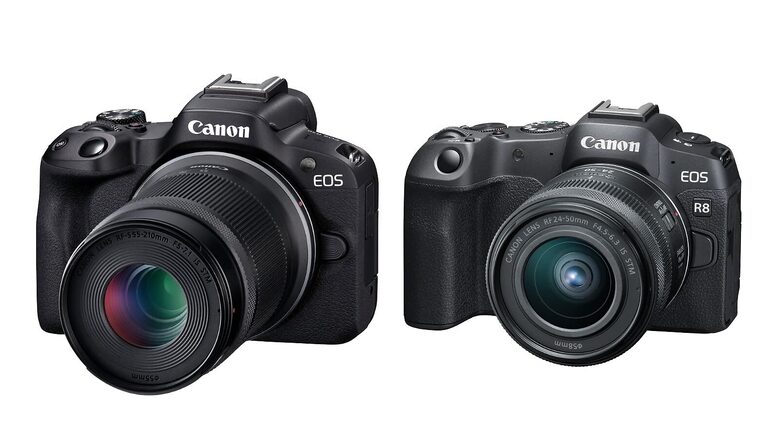
views
Canon has expanded its lineup of mirrorless cameras with the introduction of two new models: the full-frame EOS R8 and the compact, lightweight entry-level EOS R50. The EOS R8 gets features from both the EOS R6 Mark II and EOS RP—including Canon Log 3 and 40fps shooting, while the EOS R50 features an APS-C sensor and replaces the EOS M50 Mark II.
Canon EOS R8 Specifications and Features
Canon claims that the EOS R8 is their lightest full-frame mirrorless camera. It gets a 24.2-megapixel CMOS sensor, along with Movie Digital IS, providing tilt correction and image stabilization for stable handheld footage, and can record in cropless oversampled 4K at up to 60p and Full HD at up to 180p—allowing for dramatic slow motion footage. Additionally, the camera offers two options for recording 10-bit 4:2:2 high dynamic range video—HDR PQ and Canon Log 3.
Additionally, the EOS R8 carries support for UVC and UAC support—making it ideal for live streaming.
Canon EOS R50 Specifications and Features
Canon EOS R50 camera also gets a 24.2-megapixel sensor but in APS-C format. It is the first EOS-series APS-C mirrorless camera to shoot 6K-oversampled Uncropped 4K video. As for the supported frame rates, the EOS R50 can shoot in 119.88 fps at Full HD and up to 29.97 fps at 4K. Designed for vlogging, the EOS R50 has been made as light as possible—weighing in at 375g.
Also, Canon’s popular Dual Pixel CMOS AF II makes it easy to track people, animals, and vehicles based—switching focus to the subject closest to the camera. The camera also comes with two different Movie IS levels for 5-axis camera shake correction and an auto level mode that automatically corrects horizontal tilt, ensuring that footage remains steady.
New RF mount lenses: RF24-50mm f/4.5-6.3 IS STM and RF-S55-210mm f/5-7.1 IS STM
Alongside EOS R8 and EOS R50, Canon has also launched new RF mount zoom lenses—RF24-50mm f/4.5-6.3 IS STM and RF-S55-210mm f/5-7.1 IS STM. The RF24-50mm f/4.5-6.3 IS STM is designed for full-frame bodies, while the RF-S55-210mm f/5-7.1 IS STM is designed for APS-C bodies.
Read all the Latest Tech News here


















Comments
0 comment